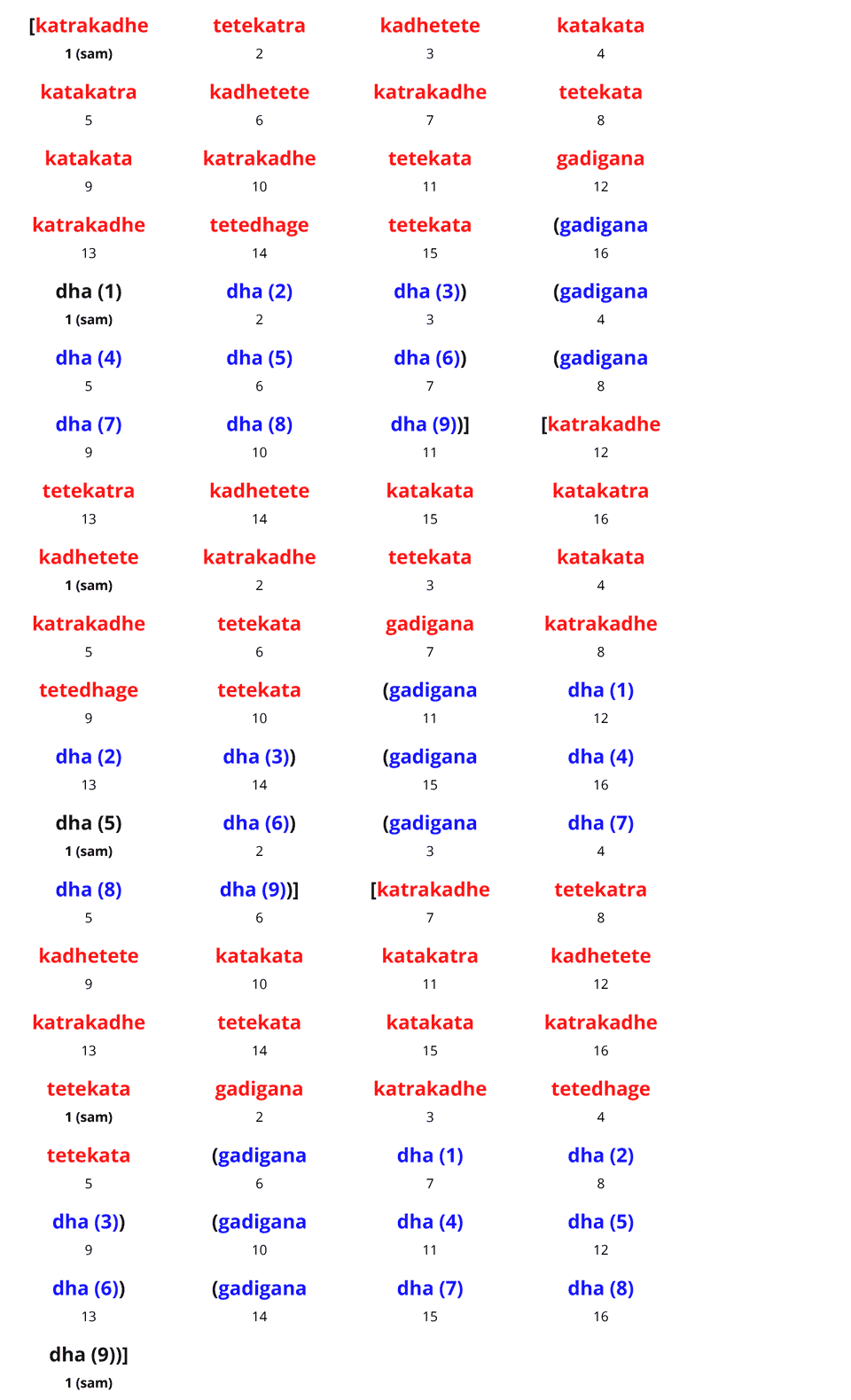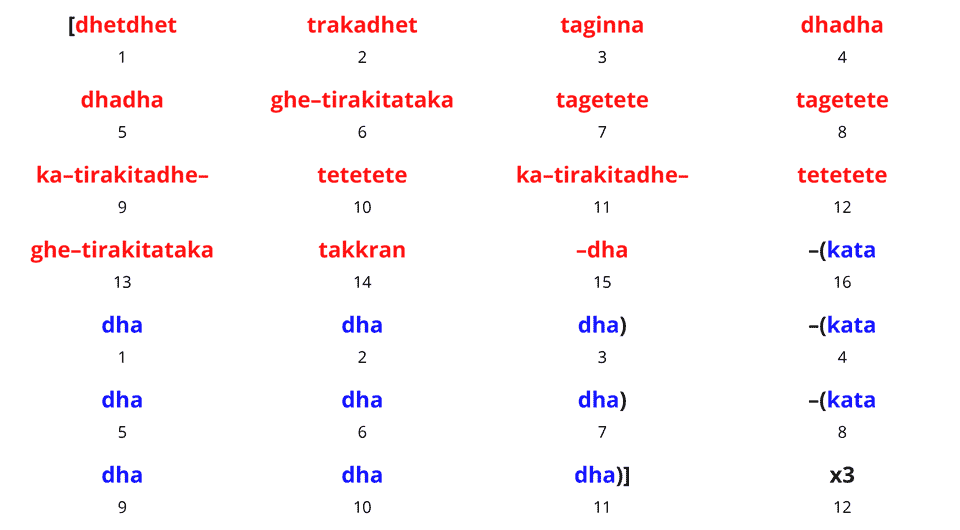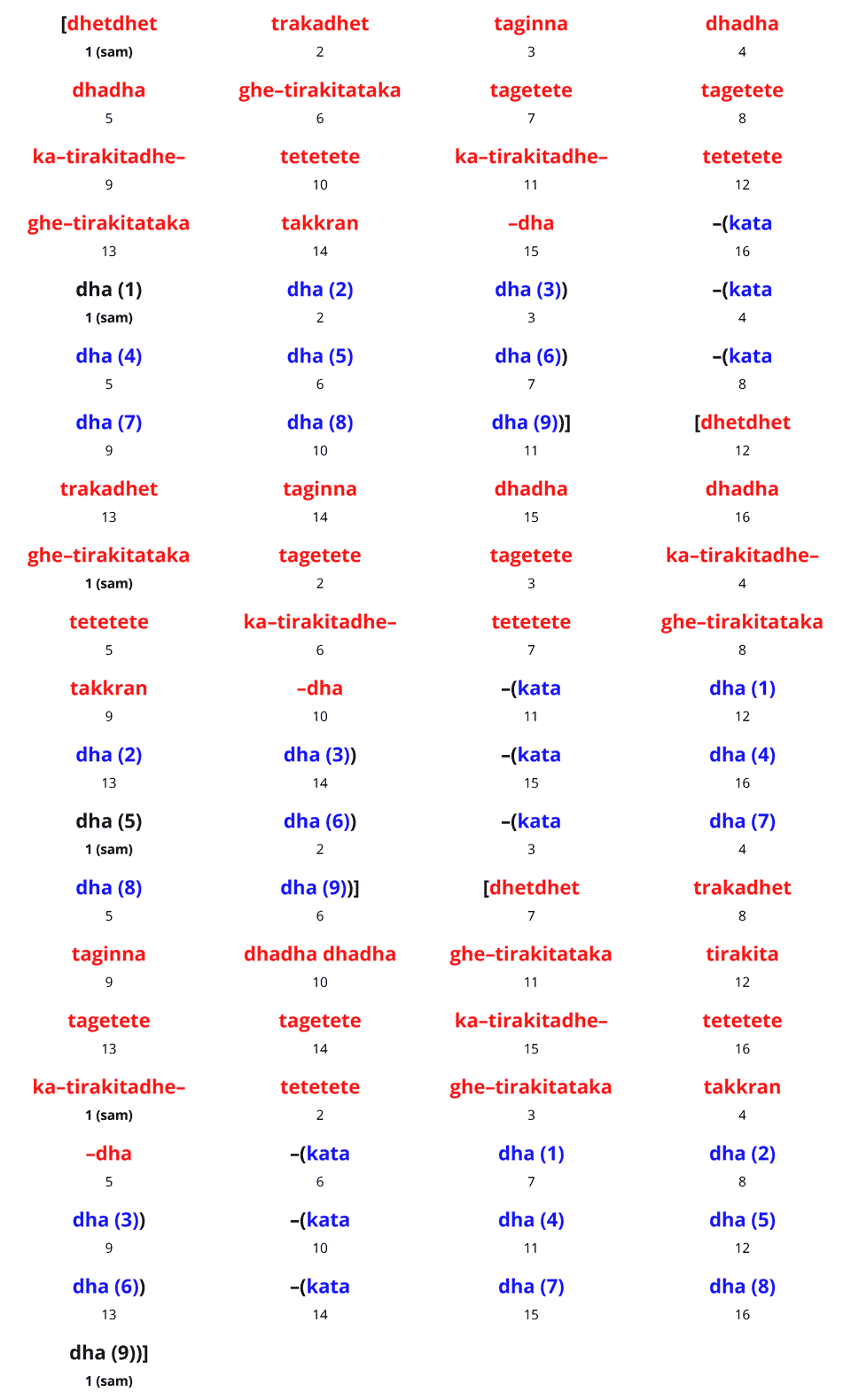Kamālī Chakradar – कमाली चक्रदार (1)
Literal meaning of kamali: feat; wondrous thing
Kamali Chakradar 1 Characteristics
The kamali chakradar (1) form has the following characteristics:
- Length of chakradar: 81 matras (5 avartans plus sam)
- Length of main repetition: 27 matras
- Length of mukhra: 15 matras
- Length of tihai: 14 matras (4-4-4 with 9 dhas)
- Length of pause between main repetitions: 0

About the Kamali Chakradar
The kamali chakradar also seems to come from the farmaishi request tradition mentioned in the previous section. However, not everyone agrees on the form.
In some traditions, the kamali chakradar, or the kamali farmaishi chakradar, are the same as the farmaishi chakradar presented in the last section. Other traditions teach the form shown here.
This kamali form is designed to create an effect similar to the farmaishi form, where particular dhas in the tihai fall on sam for each repetition (explained below). This could explain why some traditions do not distinguish between the two.
The difference between the farmaishi and kamali chakradars is that the kamali has 9 dhas in each main repetition, while the farmaishi has only 3.
In his books, Chhotelal Misra presented two tintal versions of the kamali chakradar which create the same effect:
- Kamali 1: 5 avartans in length
- Kamali 2: 7 avartans in length (discussed in the next section)
Note that Kamali 1 and Kamali 2 are not official names. The numbers 1 and 2 are only used to distinguish between the two forms.
Also, there are other kamali forms with slightly different internal structures, but we will only be looking at these two.
Kamali Chakradar 1 Mathematics
This version of the kamali chakradar has the same basic math as the sadharan and farmaishi chakradars:
- Length of chakradar = 81 matras (5 avartans plus sam: 5 x 16 = 80 + 1 = 81)
- Length of repetition = 27 matras (27 x 3 = 81)
But the division of the 27-matra repetition (mukhra and tihai) allows only a few particular divisions which must be followed. The division we will look at is as follows:
- length of mukhra = 15 matras
- length of tihai = 12 matras (4-4-4)
- each repetition of the tihai must have three dhas (9 dhas total)
The most important part of the kamali structure is that the 9 dhas of the tihai always fall on particular matras. If they do not, then the chakradar will not produce the desired effect.
Which dhas fall on sam?
- In the first repetition, dha (1) will fall on sam
- In the second repetition, dha (5) will fall on sam
- In the third repetition, dha (9) will fall on sam

This is similar to the structure of the farmaishi chakradar: the dhas which fall on sam create a pattern of beginning (1), middle (5), and end (9).
Here is the complete form of the most common kamali chakradar (1). Notice which dhas fall on sam:

Kamali Chakradar 1 Example 1
27-Matra Repetition for a Benares Kamali Chakradar:

Full Kamali Chakradar:

Kamali Chakradar 1 Example 2
Below is another Benares Kamali Chakradar. Here the tihai begins on matra 16.5 with the bol kata. If you include the pause at the beginning of the matra, then you could also say that it begins at the start of matra 16.
27-Matra Repetition:

Full Kamali Chakradar:

References
Misra, Chhote Lal. Tal Prabandh. New Delhi: Kanishka Publishers, 2006. (Hindi)
—. Playing Techniques of Tabla – Banaras Gharana. New Delhi: Kanishka Publishers, 2007.